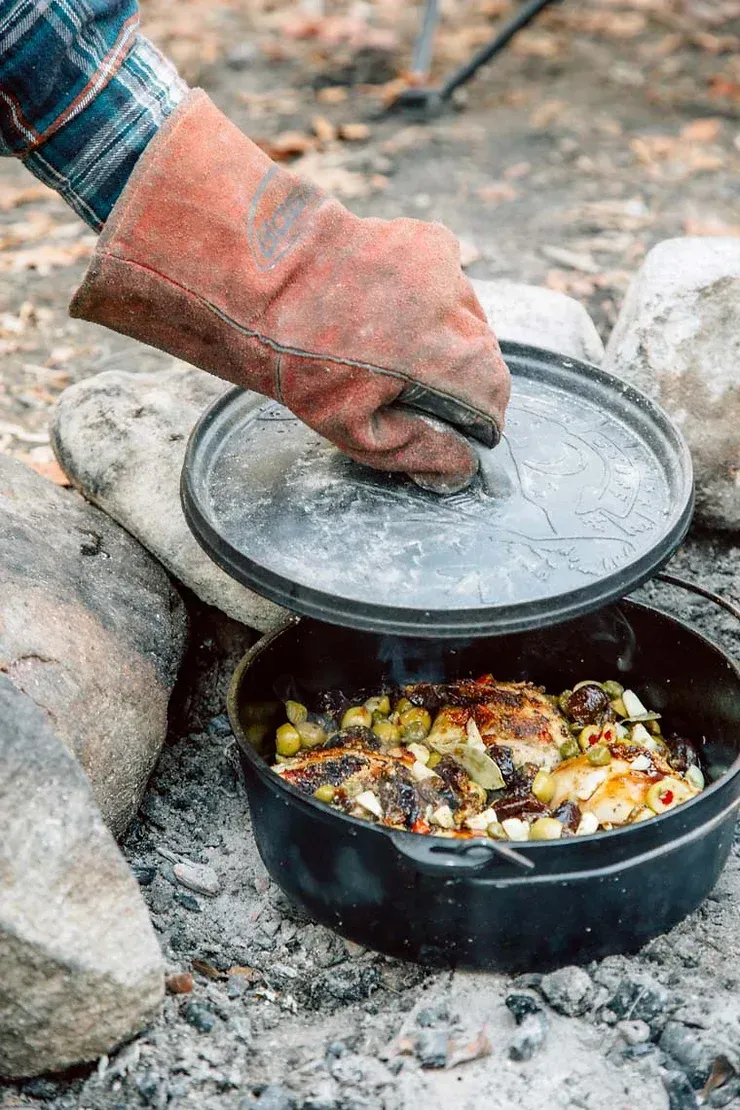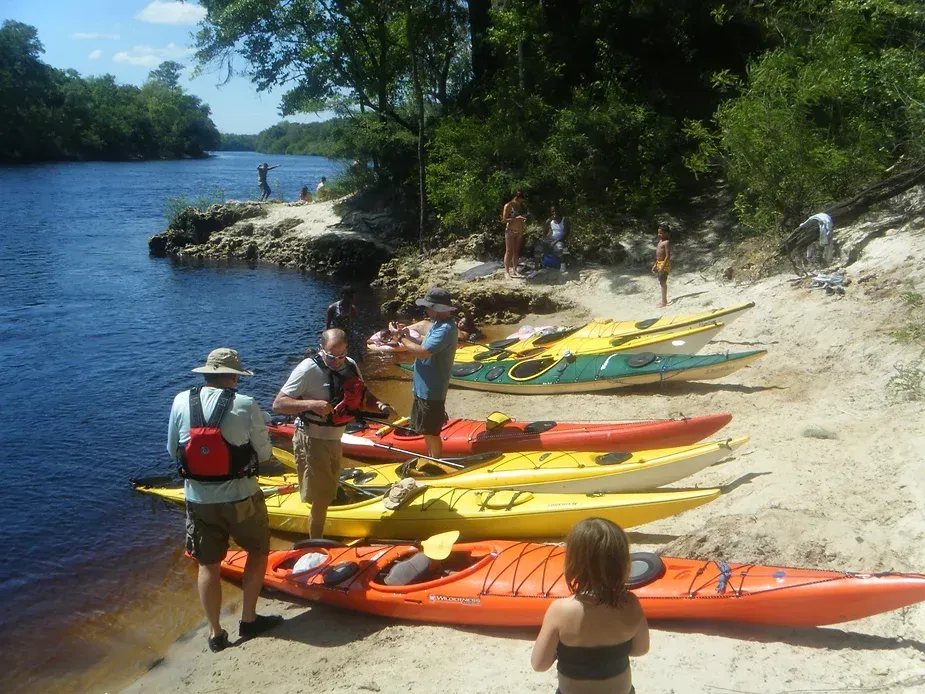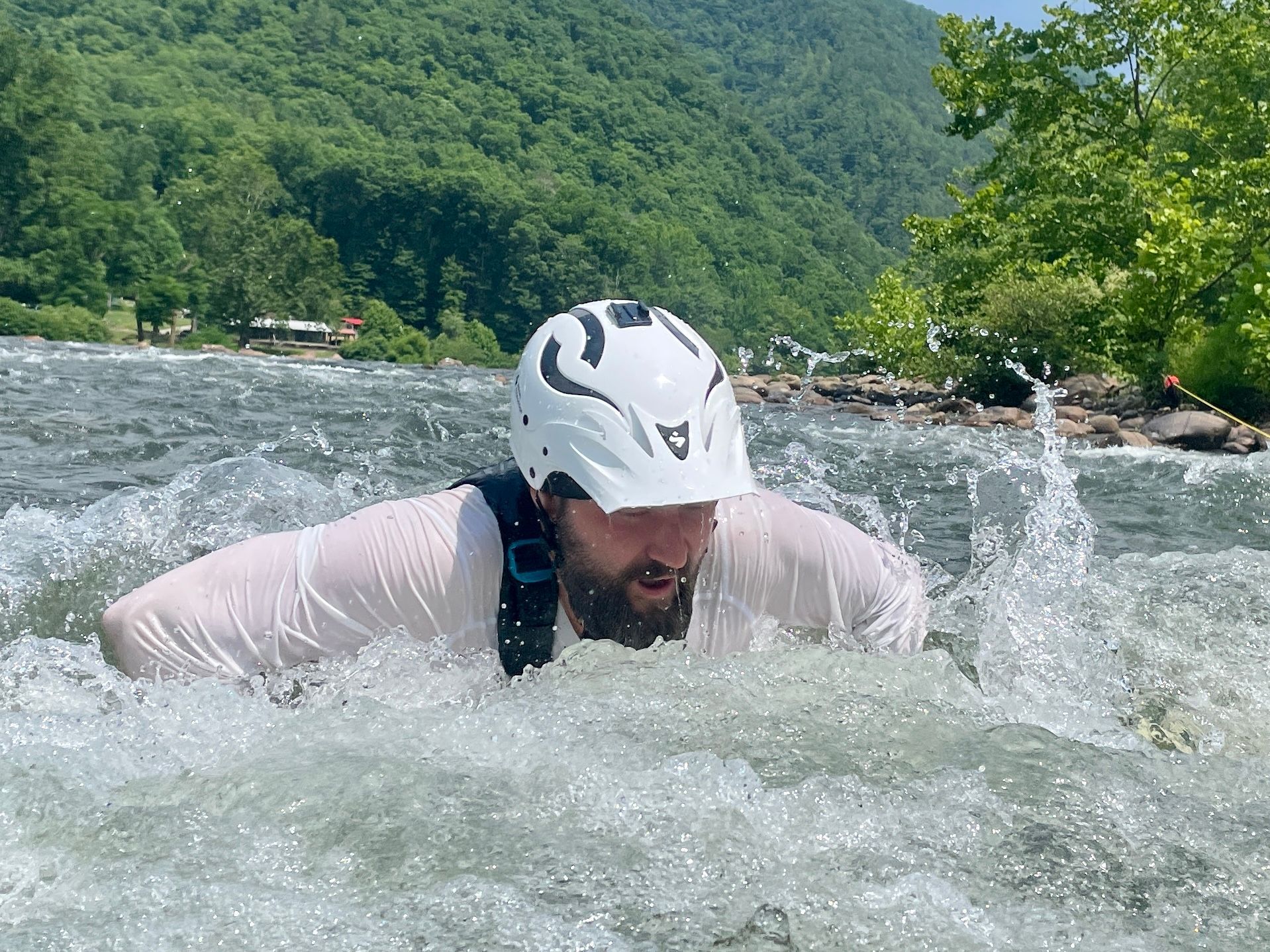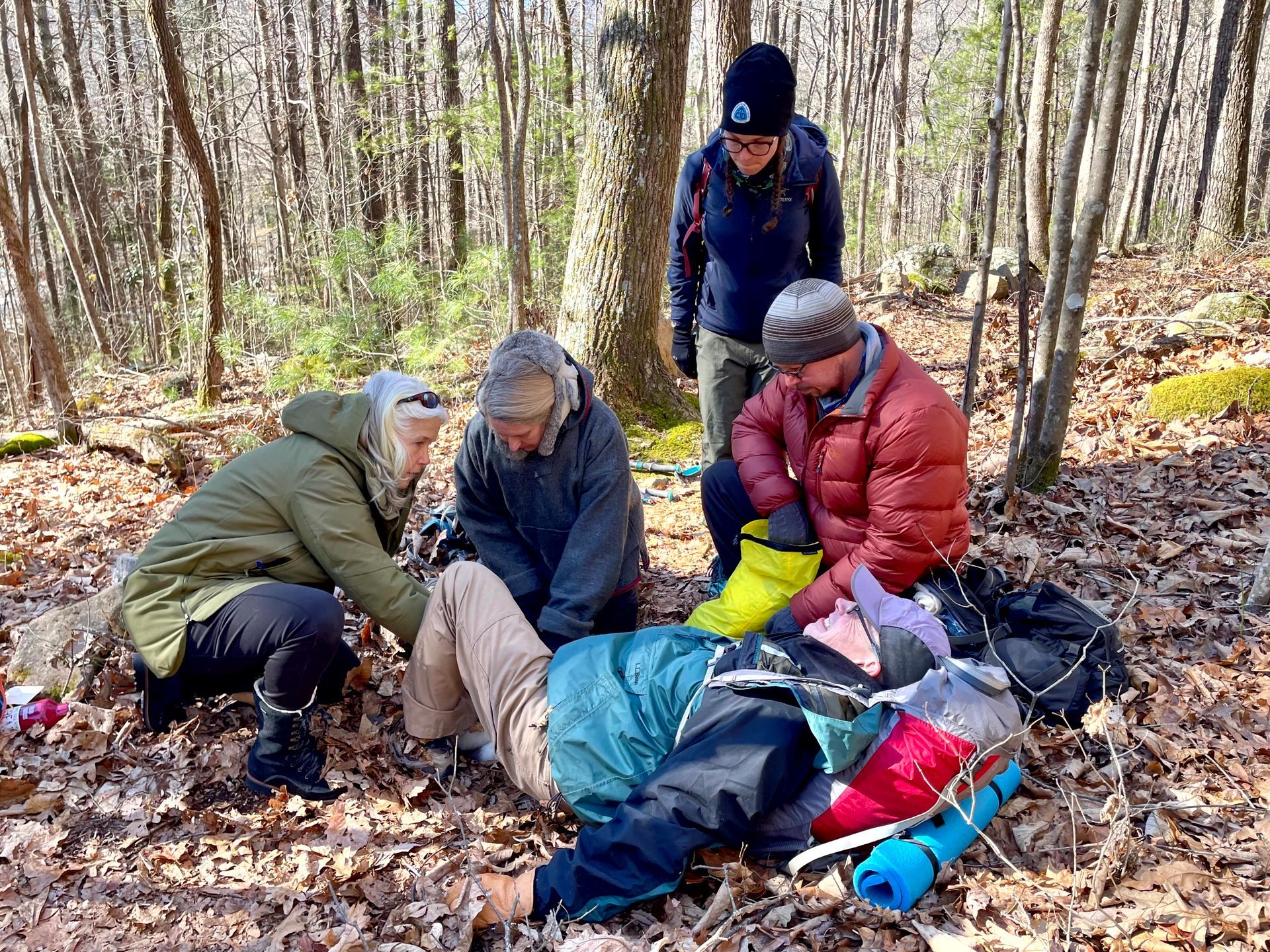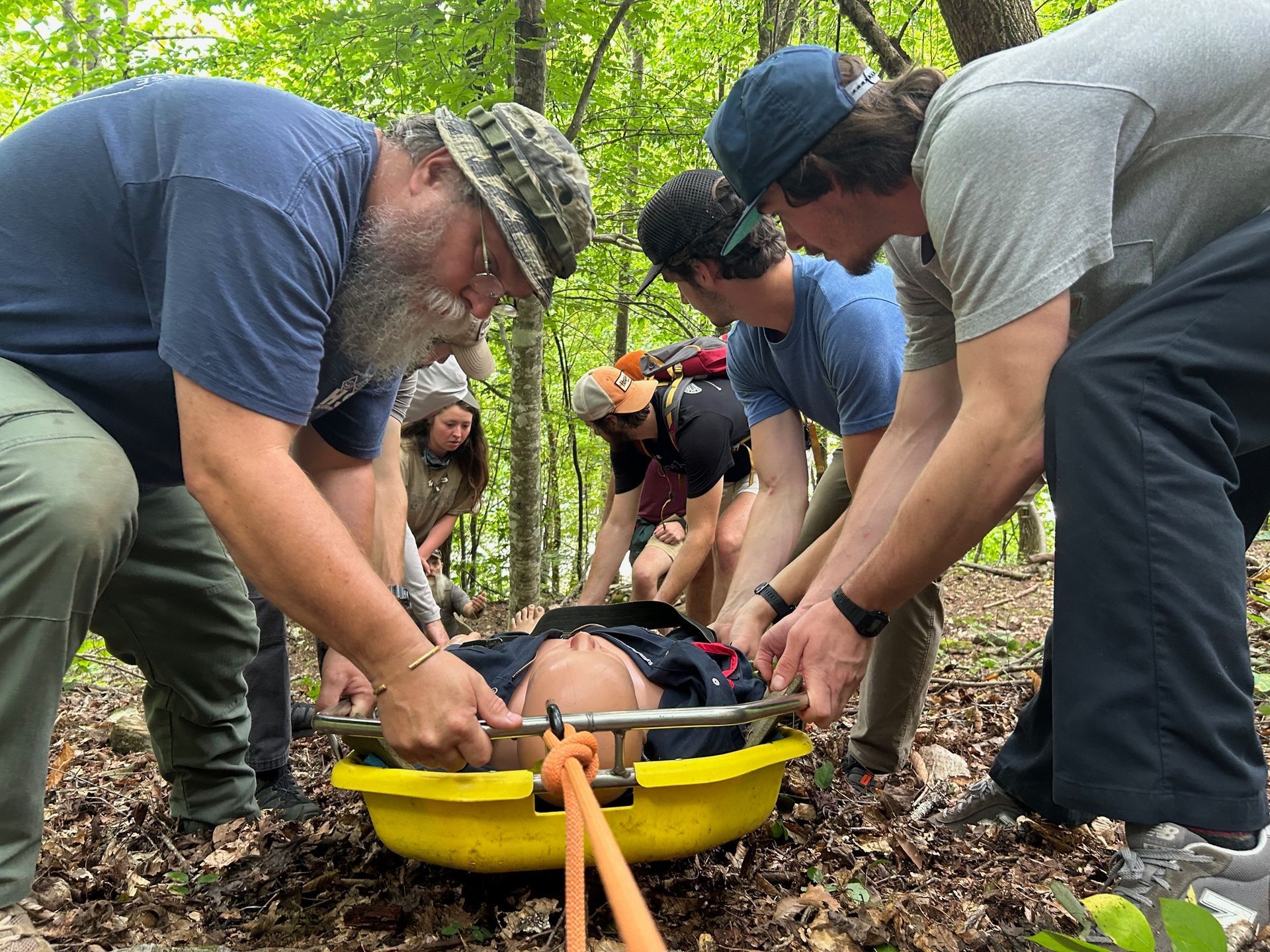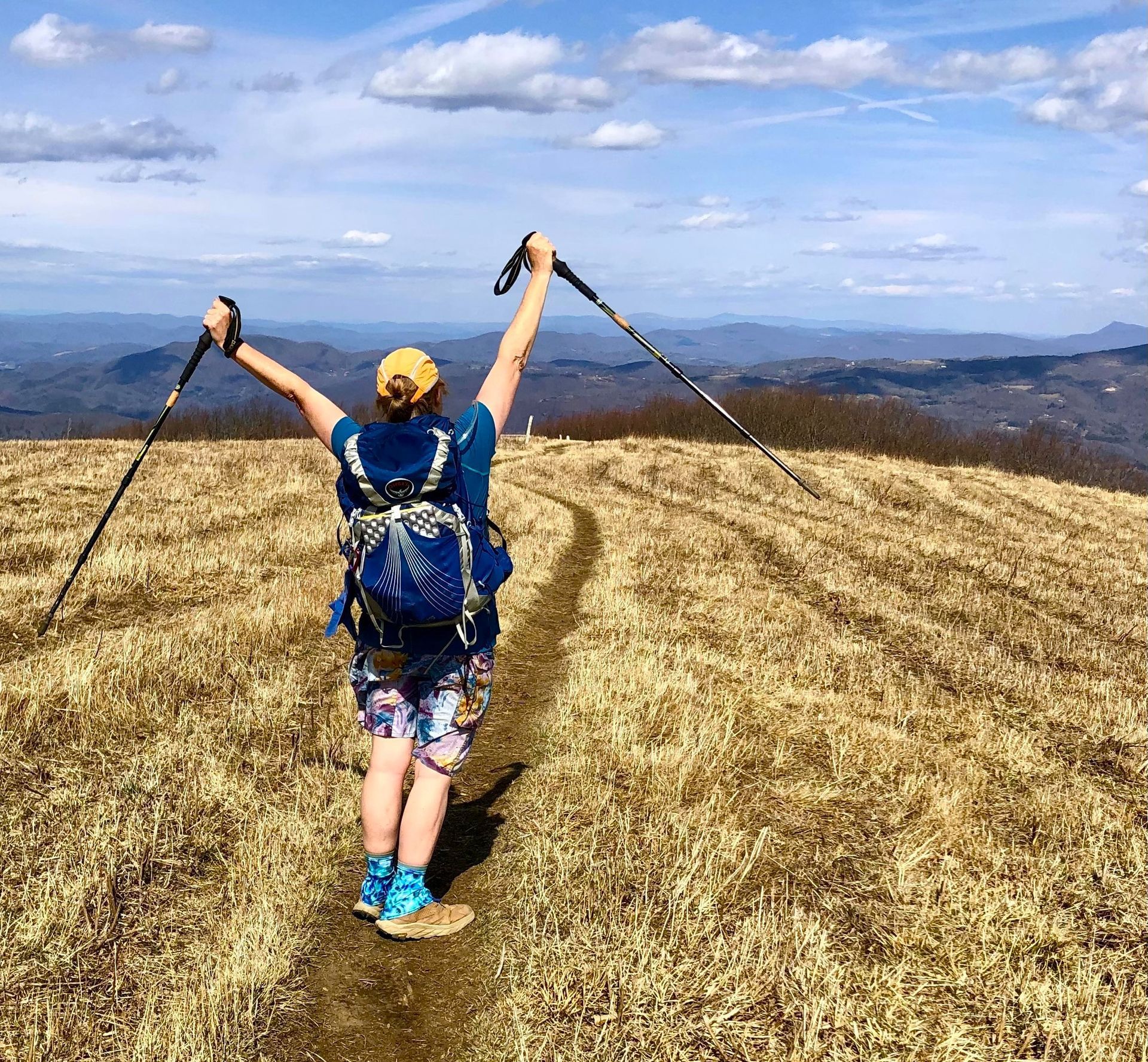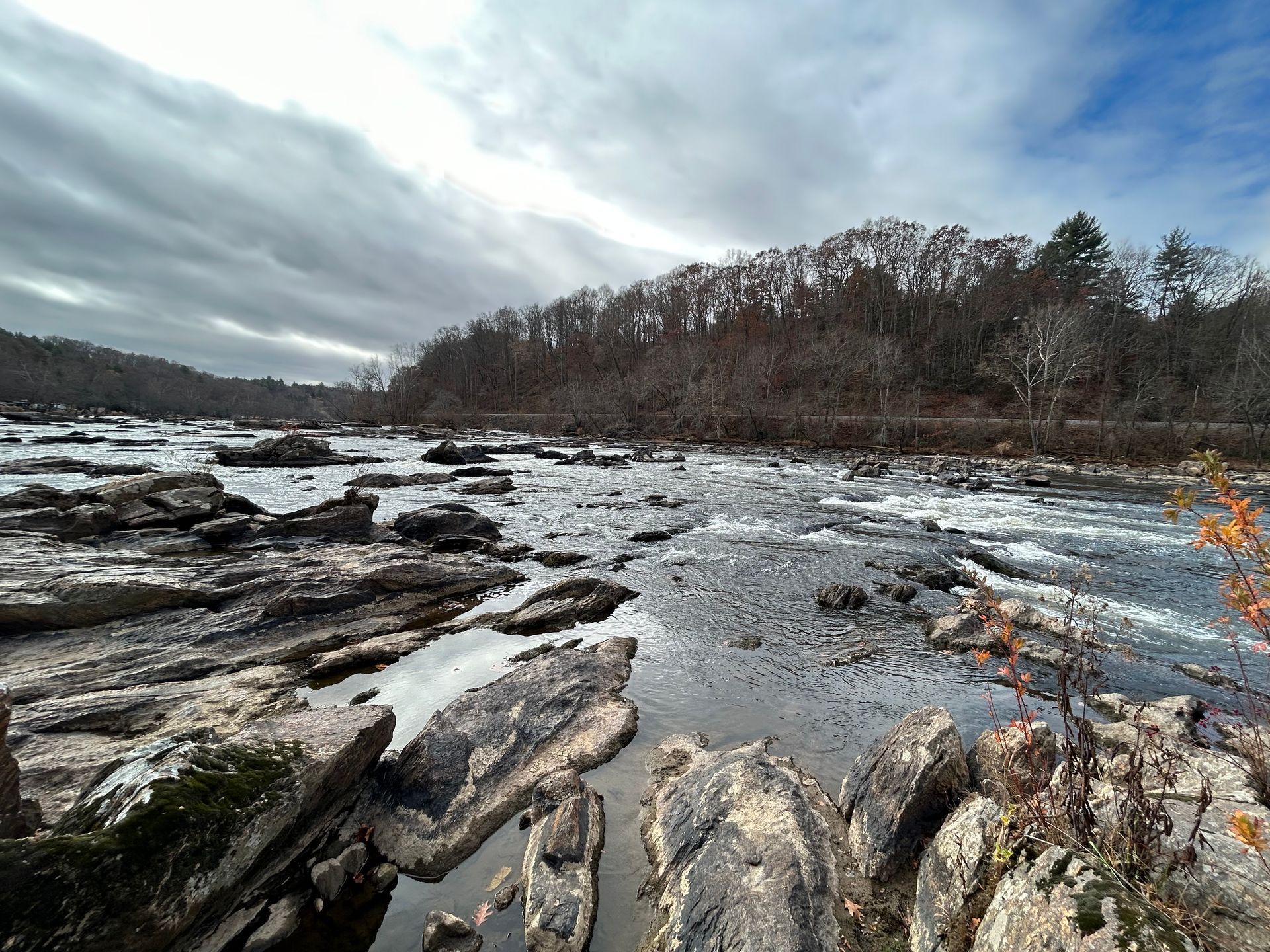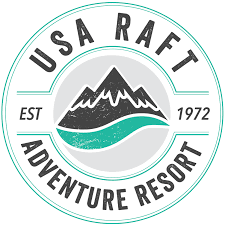Fishermen’s Rights and Responsibilities: Drafting a Trotline Bill
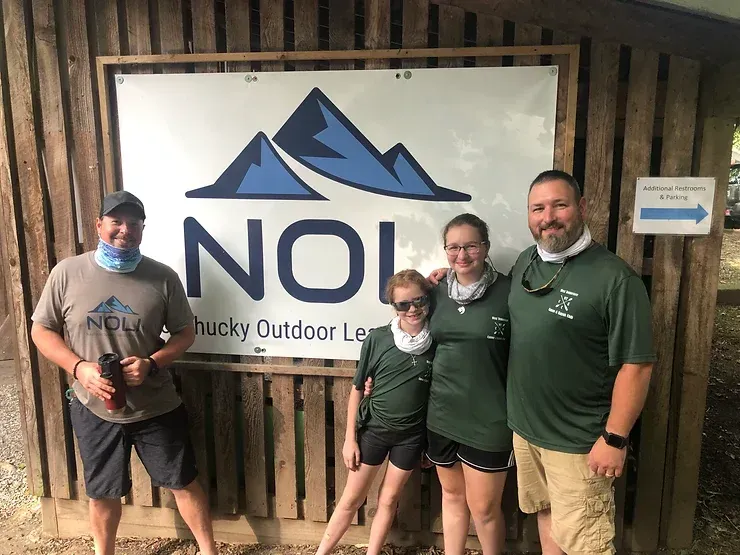
Daniel Rogers (right), pictured with daughters Aly and Abi and NOLI instructor Ryan Shealy.
In the wake of the trotline incident on the Nolichucky River during Memorial Day weekend, 2021, it has become evident that Tennessee’s trotline rules do not adequately address the hazards that trotlines can pose to paddlers, swimmers and other users of the waterways. Our team of paddling leaders at ACA Tennessee – working to support Scott Fisher in the short term and all Tennessee paddlers in the long term – needed to propose changes to the law. As an attorney whose hobbies include both fishing and paddling, I found myself in a unique position to contribute.
As it stands, the only thing Tennessee laws and regulations require of a trotline is that it not exceed 100 hooks, that the drops be at least 24” apart, and that it not be set below dams or in the mouths of rivers, creeks or sloughs. That wasn’t good enough.
In 2019, a recent MTSU graduate died on the Buffalo River while on a canoe trip. He had stopped to swim and became entangled in a suspected trotline. After another near miss with the instructor candidate on the Nolichucky in 2021, we knew it was time we acted to change Tennessee’s law to make trotlines safer.
When I was training under Tom Burroughs, he emphasized the mantra, “prevent the preventables.” I’ve found that to be wise advice, applicable to many things. That was the approach we wanted to adopt toward trotlines. We weren’t looking to outlaw them or strip them of their usefulness to anglers; rather, we wanted to mitigate the inherent risks that a trotline can pose by adding some requirements that would make them more visible to boaters and swimmers and reduce their potential as an entanglement hazard. We wanted the law to state explicitly that trotline anglers have a responsibility not to set a trotline in a way that creates a public hazard, and we wanted to give paddlers a legal defense if they encounter a trotline that presents a clear and present danger and remove that danger by removing or altering an angler’s trotline. Above all, we wanted to prevent future incidents and fatalities on Tennessee waterways.
The incident on the Nolichucky took place just a couple of river miles downstream from North Carolina, where that same trotline (set from bank-to-bank across the current) would have been illegal under NC law. That gave us the idea to survey the laws and regulations governing trotlines in other nearby states. We hoped to find language from existing trotline laws and regulations in other states that we could use to make Tennessee’s trotline law among the best in the southeast.
We wanted to propose a Fisherman’s Rights and Responsibilities Law that would serve as a dynamic example of user groups coming together to share the river while also addressing the responsibilities of sportsmen to refrain from creating hazards for others.
We began by doing a state-by-state search for laws and regulations related to trotlines in every state touching Tennessee, then, we expanded the search to the southeastern U.S., in general. What we found was intriguing, and inspiring. We compiled it into a “digest” of the notable points of each state’s rules. Have a look:
North Carolina
15A N.C. Admin. Code 10C.0206
- “Legible and indelible identification of the user’s name and address or the user’s Wildlife Resources Commission customer number.”
- “Each trotline shall be conspicuously marked at each end… with a flag, float, or other prominent object so that its location is readily discernible by boat operators and swimmers.”
- “Trotlines shall be set parallel to the nearest shore.”
South Carolina
SC Code §50-13-50
- “It is unlawful to leave a game fishing device unattended. A game fishing device left unattended is contraband.”
- “It is unlawful to use, place, set, or fish a device so as to constitute a hazard to boating or public safety.”
SC Code §50-13-620
- “A trotline… must be marked with a white floating marker not less than a capacity of one quart and not more than a capacity of one gallon and must be made of solid, buoyant material that does not sink if punctured or cracked. A floating marker must be constructed of plastic, PVC, spongex, plastic foam, or cork. A hollow buoy or float, including plastic, metal, or glass bottles or jugs, must not be used except that a manufactured buoy or float specifically designed for use with nongame fishing devices may be hollow if constructed of heavy duty plastic material and approved by the department. The owner’s name and department customer identification number must be legible on each of the white floating markers. Both commercial and recreational fisherman shall comply with provisions of this title pertaining to the marking and use of a nongame fishing device. A trotline must be marked on both ends. A commercial trotline must be marked at intervals of every fifty hooks. A commercial trotline which uses fifty or fewer hooks must be marked at intervals of twenty-five hooks. A recreational trotline must be marked at intervals of every twenty-five hooks. Each interval float must be “International Orange” in color.”
- “A tag issued for a nongame device must be attached to the device at all times. A permit and tag receipt must be kept on the person to whom issued while possessing or using a nongame fishing device.”
- “A device or part of it improperly marked, tagged, or identified is in violation and is contraband.”
SC Code §50-13-630
- “A fishing device authorized by this article must not be used, placed, set, or fished so as to constitute a hazard to boating or public safety.”
SC Code §50-13-650
- “April first to October first a trotline is not permitted in waters in this State one hour after official sunrise to one hour before official sunset unless the trotline is sunk to the bottom or to a minimum depth of four feet below the water surface.”
- “A trotline, cable, line or any other device used for support may not extend more than halfway across a stream or body of water.”
Georgia
GA Code §27-4-32
- Sport trotlines must be marked with the owner’s name and address and with visible buoys and must be submerged at least three feet below the surface of the water.”
Florida
Florida Administrative Code §68A-23.004
- Trotlines prohibited between 9:00 a.m. and sunset in most waters
Alabama
Ala. Admin. Code r. 220-2-.46
- “It shall be unlawful for any fisherman other than a licensed commercial fisherman to fish one or more trotline, snag or snare line or combination thereof containing more than 100 hooks.”
Mississippi
40 Miss. Code R. §3-3.1
- “It is unlawful to set any freshwater commercial fishing equipment so that it extends more than half way across any stream, channel, drain or other body of water. A guide line that does not impede navigation may be set.”
Louisiana
LA Rev. Stat. §56:321
- “No person shall set, maintain, take or attempt to take fish from any trotline of which any segment of the staging line measures in excess of four feet where any portion of any hook extends above the surface of the waters of any of the bodies of waters within the state of Louisiana.”
- “Such action shall be considered prima facie evidence of negligence in a civil action for damages suffered by another as a result thereof.”
Arkansas
002.01.20-133 Ark. Code R. §26.21
- Nothing notable
Missouri
Mo. Code Regs. Tit. 3§10-6.410
- “Live bait traps, hooks, trotlines, throw-lines, limb lines, bank lines, or anchored jug lines (rendered immobile from the location where set) may not be left unattended for more than twenty-four (24) hours or must be completely removed. Unanchored jug lines in streams must be attended at all times by the permittee’s immediate presence. Unanchored jug lines in impounded waters must be attended by the permittee’s immediate presence at least one (1) time per hour. For purposes of this section, immediate presence is defined as within sight of the location of equipment in order to personally claim or identify such equipment during inspection by an agent of the department.”
Kentucky
301 Ky. Admin. Regs. 1:410§4
- Sport fishing trotlines must be set at least three feet below the water’s surface
- Must be checked or baited at least once every twenty-four hours
Virginia
4VAC15-350-60
- “Any person setting or in possession of a trotline, jugline, or set pole shall have it clearly marked by permanent means with his name, address, and telephone number, and is required to check all lines at least once each day, remove all fish and animals caught, and remove all lines when not in use.”
And with this digest in hand, we drafted this bill:
SECTION 1. Tennessee Code Annotated, Section 70-4-104, is amended by deleting the section and substituting:
(a) Fish may be taken:
(1) With rod and reel;
(2) By hook and line held in the hand while fishing; or
(3) By one (1) or more trotlines that meet the requirements of subsection (c).
(b) Except as provided for in subsection (a), this title, or the commission's rules or proclamations, a person shall not use or possess an instrument for the killing, catching, or taking of fish or other aquatic life.
(c) In order to be used for the taking of fish in this state, a trotline must:
(1) Consist of a main line with drop lines that are not longer than twenty-four inches (24") to which single hooks are attached. The drop lines must be no closer than twenty-four inches (24") together. A trotline must not consist of more than one hundred (100) hooks that are attached and baited to catch fish;
(2) Be conspicuously marked at each end with a white floating marker having a capacity of not less than one quart (1 qt.) nor more than one gallon (1 gal.) and made of solid, buoyant material that does not sink if punctured or cracked. Each white floating marker must be marked legibly and indelibly with the trotline owner’s name, address, and telephone number or the agency identification number for the trotline;
(3) Be marked at intervals of every twenty-five (25) hooks with an interval float that is daylight fluorescent orange in color, as defined in § 70-4-124(b). Each interval float must be marked legibly and indelibly with the trotline owner’s name, address, and telephone number or the agency identification number for the trotline;
(4) Be set parallel to the nearest shore;
(5) Not be set within one hundred yards (100 yds.) of the mouth of any river, creek, or slough, or within one thousand yards (1,000 yds.) below any dam that is owned or operated by the Tennessee Valley authority or the United States army corps of engineers;
(6) Be submerged at least three feet (3') below the surface of the water, and no part of any drop line or hook may extend on or above the surface of the water;
(7) Not be used, placed, set, or fished in a manner that constitutes a hazard to boating or public safety;
(8) Be checked and all animals caught removed at least once every twenty-four (24) hours; and
(9) Not be set before one-half (1/2) hour before sunset and be removed within one-half (1/2) hour after sunrise each day on April 1 through October 1 of each year.
(d) It is a Class B misdemeanor offense for a person to intentionally make or possess, or use for the taking of fish, a trotline that is inconsistent with the requirements of subsection (c).
(e) Any trotline made or used in a manner inconsistent with the requirements of subsection (c) is contraband and subject to seizure by any law enforcement officer having knowledge thereof, subject to §70-6-201.
(f) There is a cause of action for a person who suffers bodily injury or death resulting from the use of a trotline in a manner inconsistent with the requirements of subsection (c). In a civil action under this subsection (f):
(1) A violation of subdivision (c)(6) is prima facie evidence of negligence on the part of the trotline owner; and
(2) The court shall award a prevailing plaintiff treble damages, together with reasonable attorney's fees and costs.
SECTION 2. Tennessee Code Annotated, Section 70-4-302, is amended by adding the following as a new subsection:
(c) It is a defense to prosecution under this section and § 39-14-206 that a person removed or altered another person's trotline to prevent or remedy a clear and present danger posed by the trotline to the person or another person who was lawfully using the waters of the state.
SECTION 3. This act takes effect July 1, 2022, the public welfare requiring it.
We've taken the best language we could find and asked the Tennessee General Assembly to adopt it, but we need your help. Please click the link in this article and ask your representatives to support this bill. Paddlers are a large and growing percentage of the citizens of Tennessee. If we speak up now we have the opportunity to prevent another senseless tragedy.
Will you help us?

